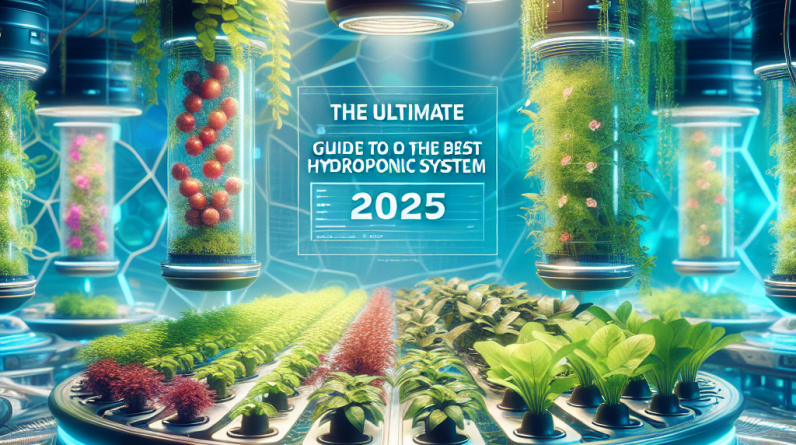
Table of Contents
- 1. Top Hydroponic System Overview for 2025
- 2. Vertical Indoor Hydroponics and Space Optimization
- 2025: Complete List of All Topics
- Frequently Asked Questions
1. Top Hydroponic System Overview for 2025
Introduction to Indoor Hydroponic Systems
As we move further into 2025, indoor hydroponic systems are revolutionizing how we grow food, herbs, and ornamental plants at home and commercially. These systems allow cultivation without soil, using nutrient-rich water solutions, which results in faster growth and higher yields. Choosing the right indoor hydroponic system is crucial for your success, whether you’re a beginner or a seasoned grower.
In this guide, weâll explore the leading types of indoor hydroponic systems available in 2025, their features, pros, and cons. Understanding the differences helps you tailor a setup that fits your space, budget, and gardening goals.
Recent innovations have introduced smart technology, automation, and eco-friendly designs into these systems, making indoor gardening more accessible and sustainable than ever before.
2. Vertical Indoor Hydroponics and Space Optimization
Maximizing Growing Space with Vertical Designs
Vertical indoor hydroponic systems are gaining popularity as the best way to optimize limited space. By stacking multiple plant layers, you can significantly increase your growing capacity in a compact footprint. These systems are especially useful for urban dwellers or small-scale commercial growers.
Vertical setups also facilitate better light distribution and airflow, which are critical for healthy plant growth. Many systems incorporate LED grow lights built into the design, ensuring uniform light for all plants.
When choosing a vertical indoor hydroponic system in 2025, consider factors like ease of assembly, scalability, and maintenance. Some systems can support dozens of plants in as little as two square meters.
Advantages of Vertical Hydroponics
Vertical hydroponic systems offer numerous benefits, including higher yields per square foot, efficient nutrient usage, and reduced water consumption. They are ideal for growing herbs like basil and cilantro, leafy greens, and strawberries.
Automation features, such as automatic nutrient dosing and climate control, further enhance productivity. Plus, they often incorporate smart interfaces compatible with mobile apps, making management straightforward.
Investing in a good vertical hydroponic system can turn even the smallest apartment into a productive farm by 2025.
2025: Complete List of All Topics Covered
Frequently Asked Questions
1. What is an indoor hydroponic system?
An indoor hydroponic system is a soil-less method of growing plants inside your home or facility using nutrient-rich water solutions. These systems often integrate lighting, climate control, and automation to optimize plant growth indoors.
2. Which indoor hydroponic system is best for beginners in 2025?
For beginners, systems like NFT (Nutrient Film Technique) or simple, ready-made hydroponic kits are ideal. These are user-friendly, require minimal setup, and have abundant online resources for support.
3. How much does a typical indoor hydroponic system cost in 2025?
Prices vary according to size and features, but basic systems can start as low as $100, while high-end, automated setups may cost over $1,000. Investing in quality ensures better yields and longer-lasting components.
4. Can I grow all types of plants with an indoor hydroponic system?
Most leafy greens, herbs, and strawberries thrive in indoor hydroponic setups. However, root vegetables and larger fruiting plants like tomatoes may require specialized systems or larger spaces.
5. Why is choosing the right indoor hydroponic system important for 2025?
In 2025, indoor hydroponic systems have become more advanced, making it essential to select a system that matches your space, budget, and plant needs. The right system will improve growth rates, conserve resources, and simplify maintenance.








